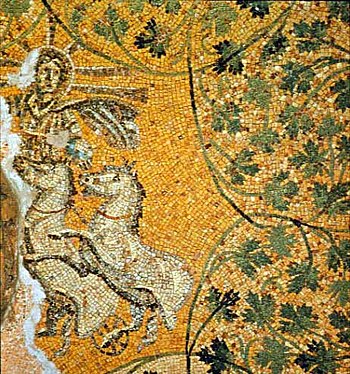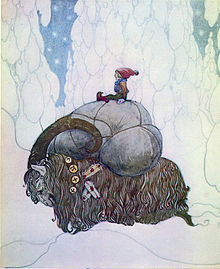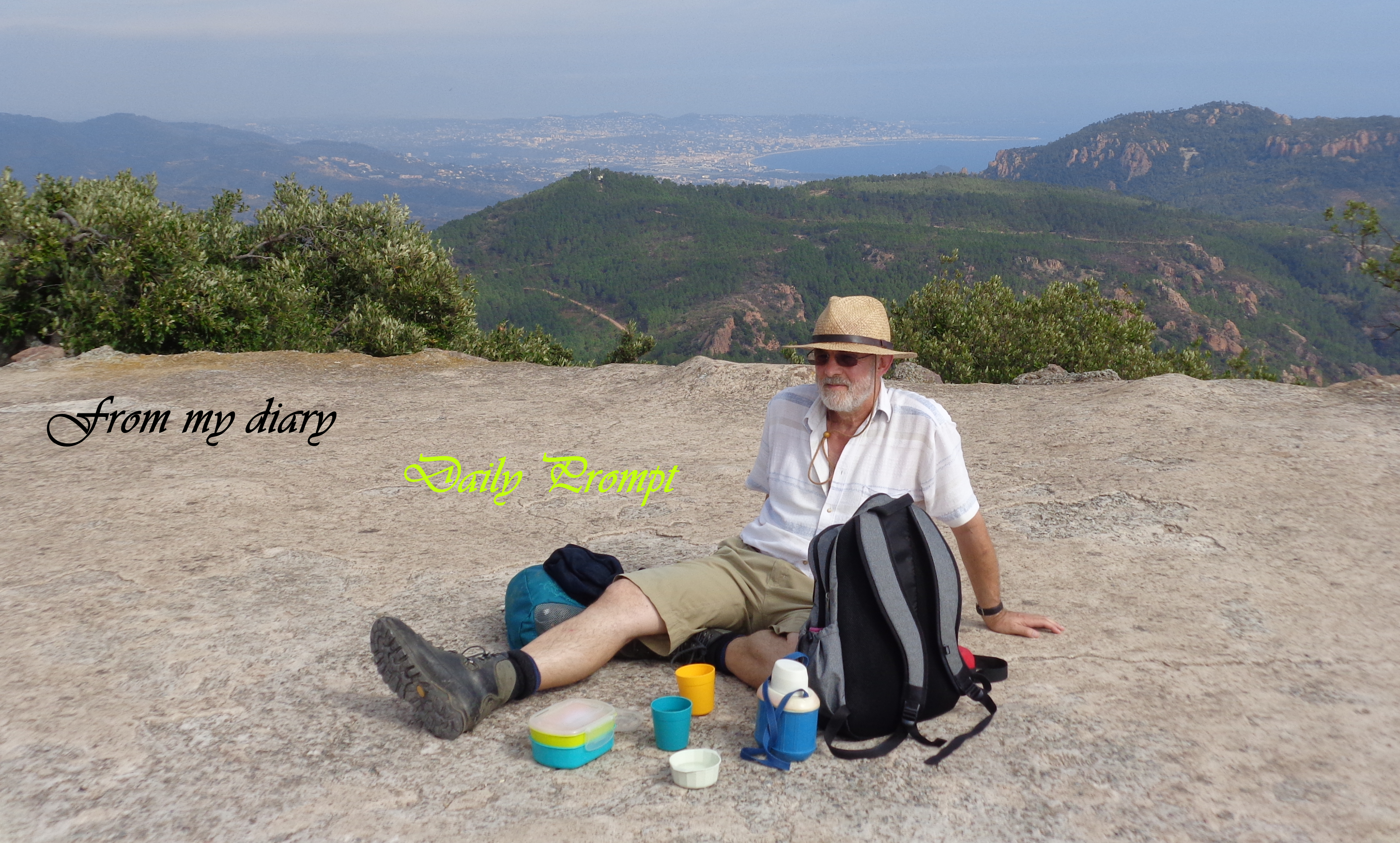In the Three basic commands, you could read about three basic commands a Christian has to keep. For a Christian the fundamentals of his faith are to
-
- Obey God’s and Christ’s commands
- Not to test God
- Only to worship One God and to have no other gods before Him
A real Christian follows Christ Jesus and would love to become like him and do like him. In such way a Christian would devote his life to the same God Jesus devoted his life. Jesus always wanted to do the Will of God. His intention was also to let others know God. Jesus, who also could not do anything by his own, also wanted people not to look for what he wanted to do, but for what his heavenly Father, the Only One True God, Who had sent him wanted.
30 I can of mine own self do nothing: as I hear, I judge: and my judgment is just; because I seek not mine own will, but the will of the Father which hath sent me. (John 5:30, NRKJV)
34 Yahushua saith unto them, My meat is to do the will of him that sent me, and to finish his work. (John 4:34, NRKJV)
36 But I have greater witness than that of John: for the works which the Father hath given me to finish, the same works that I do, bear witness of me, that the Father hath sent me. (John 5:36, NRKJV)
The apostle John in one of his letters asks his readers to think about which way they want to go and what they want to believe.
9 If we receive the witness of men, the witness of יהוה is greater: for this is the witness of יהוה which he hath testified of his Son. 10 He that believeth on the Son of יהוה hath the witness in himself: he that believeth not יהוה hath made him a liar; because he believeth not the record that יהוה gave of his Son. 11 And this is the record, that יהוה hath given to us eternal life, and this life is in his Son. 12 He that hath the Son hath life; and he that hath not the Son of יהוה hath not life. 13 These things have I written unto you that believe on the name of the Son of יהוה; that ye may know that ye have eternal life, and that ye may believe on the name of the Son of יהוה. (1John 5:9-13, NRKJV)
Real Christians, who believe they can get life in the son of God, should go by the Words of the Book of books, the Bible and not follow human dogma’s.
14 And this is the confidence that we have in him, that, if we ask any thing according to his will, he heareth us: 15 And if we know that he hear us, whatsoever we ask, we know that we have the petitions that we desired of him. (1John 5:14-15, NRKJV)
The insurance that Jesus is not God but the mediator between God and man, gives us no reason to be afraid to pray in his name and to go up to Jesus his heavenly Father, Whom we, thanks to Jesus Christ, also can call our heavenly Father.
3 For this is good and acceptable in the sight of יהוה our Saviour; 4 Who will have all men to be saved, and to come unto the knowledge of the truth. 5 For there is one Elohim, and one mediator between Elohim and men, the man Yahushua the Messiah; 6 Who gave himself a ransom for all, to be testified in due time. 7 Whereunto I am ordained a preacher, and an apostle, (I speak the truth in the Messiah, and lie not;) a teacher of the Gentiles in faith and verity. 8 I will therefore that men pray every where, lifting up holy hands, without wrath and doubting. (1Tim 2:3-8, NRKJV)
It is our faith in Jesus which brings us to come close to his heavenly Father, willing to have Him also as our heavenly Father. It is in such way that Jesus also taught people to pray to his God not as hypocrites.
5 And when thou prayest, thou shalt not be as the hypocrites are: for they love to pray standing in the synagogues and in the corners of the streets, that they may be seen of men. Verily I say unto you, They have their reward. 6 But thou, when thou prayest, enter into thy closet, and when thou hast shut thy door, pray to thy Father which is in secret; and thy Father which seeth in secret shall reward thee openly. 7 But when ye pray, use not vain repetitions, as the heathen do: for they think that they shall be heard for their much speaking. 8 Be not ye therefore like unto them: for your Father knoweth what things ye have need of, before ye ask him. 9 After this manner therefore pray ye:
Our Father which art in heaven, Hallowed be thy name. 10 Thy kingdom come. Thy will be done in earth, as it is in heaven. (Matt 6:5-10, NRKJV)
Jesus not being God, believed in the God of Israel and trusted Him. He believed that Jehovah God was with him and would take him up in His reign.
17 Yahushua saith unto her, Touch me not; for I am not yet ascended to my Father: but go to my brethren, and say unto them, I ascend unto my Father, and your Father; and to my Elohim, and your Elohim. (John 20:17, NRKJV)
For Jesus, it was clear that his Father was also the Father of all others, and His God was and is also The God of others (but not of all, because many do not accept Jehovah as their Most High Elohim or God).
Before Jesus was taken into heaven he showed his wounds proving that he was not a ghost or spirit like his heavenly Father, Who is an unseen Singular Spirit Being. As such the disciple could be a witness that there stood the real son of man Jesus, who was their master.
36 And as they thus spake, Yahushua himself stood in the midst of them, and saith unto them, Peace be unto you. 37 But they were terrified and affrighted, and supposed that they had seen a spirit. 38 And he said unto them, Why are ye troubled? and why do thoughts arise in your hearts? 39 Behold my hands and my feet, that it is I myself: handle me, and see; for a spirit hath not flesh and bones, as ye see me have. 40 And when he had thus spoken, he shewed them his hands and his feet.
41 And while they yet believed not for joy, and wondered, he said unto them, Have ye here any meat? 42 And they gave him a piece of a broiled fish, and of an honeycomb. 43 And he took it, and did eat before them.
44 And he said unto them, These are the words which I spake unto you, while I was yet with you, that all things must be fulfilled, which were written in the law of Moses, and in the prophets, and in the psalms, concerning me.
45 Then opened he their understanding, that they might understand the scriptures, 46 And said unto them, Thus it is written, and thus it behoved the Messiah to suffer, and to rise from the dead the third day:
gives them a charge
47 And that repentance and remission of sins should be preached in his name among all nations, beginning at Jerusalem. 48 And ye are witnesses of these things.
promises the Holy Ghost
49 And, behold, I send the promise of my Father upon you: but tarry ye in the city of Jerusalem, until ye be endued with power from on high.
and so ascends into heaven
50 And he led them out as far as to Bethany, and he lifted up his hands, and blessed them. 51 And it came to pass, while he blessed them, he was parted from them, and carried up into heaven.
Now Jesus is sitting at the right hand of God and not on God’s throne, but on his throne as chosen one from God and as a high priest for God.
63 But Yahushua held his peace. And the high priest answered and said unto him, I adjure thee by the living Elohim, that thou tell us whether thou be the Messiah, the Son of the Almighty. 64 Yahushua saith unto him, Thou hast said: nevertheless I say unto you, Hereafter shall ye see the Son of man sitting on the right hand of power, and coming in the clouds of heaven. (Matt 26:63-64, NRKJV)
62 And Yahushua said, I am: and ye shall see the Son of man sitting on the right hand of power, and coming in the clouds of heaven. (Mark 14:62, NRKJV)
19 So then after Yahushua had spoken unto them, he was received up into heaven, and sat on the right hand of יהוה. (Mark 16:19, NRKJV)
55 But he, being full of the Holy Spirit, looked up stedfastly into heaven, and saw the glory of יהוה, and Yahushua standing on the right hand of the Most High, (Acts 7:55, NRKJV)
Heb 1
1 Elohim, who at sundry times and in divers manners spake in time past unto the fathers by the prophets, 2 Hath in these last days spoken unto us by his Son, whom he hath appointed heir of all things, by whom also he made the worlds; 3 Who being the brightness of his glory, and the express image of his person, and upholding all things by the word of his power, when he had by himself purged our sins, sat down on the right hand of the Majesty on high; (Heb 1:1-3, NRKJV)
God want us in a relationship with Him through Christ. And God wants us to trust him completely. Christians should be people who trust God in the same way Jesus trusted his God. Jesus dared to give his life, trusting in his heavenly Father. God can not die, but Jesus died and went into the grave. For three days Jesus was in hell (sheol – hades = the grave).
30 Therefore being a prophet, and knowing that יהוה had sworn with an oath to him, that of the fruit of his loins, according to the flesh, he would raise up the Messiah to sit on his throne; 31 He seeing this before spake of the resurrection of the Messiah, that his soul was not left in hell, neither his flesh did see corruption. 32 This Yahushua hath יהוה raised up, whereof we all are witnesses. 33 Therefore being by the right hand of יהוה exalted, and having received of the Father the promise of the Holy Spirit, he hath shed forth this, which ye now see and hear. 34 For David is not ascended into the heavens: but he saith himself, יהוה said unto my master, Sit thou on my right hand, 35 Until I make thy foes thy footstool. 36 Therefore let all the house of Israel know assuredly, that יהוה hath made that same Yahushua, whom ye have crucified, both King and Messiah. (Acts 2:30-36, NRKJV)
That is today our assurance and hope. Jesus by God exalted to be our Saviour or Christ, being the Messiah. We should understand the words of Jesus and recognise the God of Jesus also as our God and our Father.
42 Yahushua said unto them, If Elohim were your Father, ye would love me: for I proceeded forth and came from Elohim; neither came I of myself, but he sent me. 43 Why do ye not understand my speech? even because ye cannot hear my word. 44 Ye are of your father the devil, and the lusts of your father ye will do. He was a murderer from the beginning, and abode not in the truth, because there is no truth in him. When he speaketh a lie, he speaketh of his own: for he is a liar, and the father of it. 45 And because I tell you the truth, ye believe me not. 46 Which of you convinceth me of sin? And if I say the truth, why do ye not believe me? 47 He that is of יהוה heareth יהוה’s words: ye therefore hear them not, because ye are not of יהוה. (John 8:42-47, NRKJV)
Christians should hear Jesus and believe him and in the same way as Jesus believed his heavenly Father, the Only One True God, Christians also should believe that God of Israel. The same as Jesus did not wait until it was too late, we should not wait before trying to have such a good relationship with God as Jesus had.
Today lots of people calling themselves Christian want to be befriended with the world and keep to their feasts. Such love for the world gives fog to their thoughts, not able to see the Biblical Truth because preferring to keep to human teachings. But God requires faithful love and worship.
4 Ye adulterers and adulteresses, know ye not that the friendship of the world is enmity with יהוה? whosoever therefore will be a friend of the world is the enemy of יהוה. 5 Do ye think that the scripture saith in vain, The spirit that dwelleth in us lusteth to envy? 6 But he giveth more favour. Wherefore he saith, יהוה resisteth the proud, but giveth favour unto the humble. 7 Submit yourselves therefore to יהוה. Resist the devil, and he will flee from you. 8 Draw nigh to יהוה, and he will draw nigh to you. Cleanse your hands, ye sinners; and purify your hearts, ye double minded. 9 Be afflicted, and mourn, and weep: let your laughter be turned to mourning, and your joy to heaviness. 10 Humble yourselves in the sight of יהוה, and he shall lift you up. (Jas 4:4-10, NRKJV)
We should not be double-minded and not twist words of the Scriptures so that they’ll suit a lot of people who would love to belong to the majority instead of choosing for the path of God and narrow gate to the kingdom of God. Following Christ means going for him and doing as he and God want it.
14 Because strait is the gate, and narrow is the way, which leadeth unto life, and few there be that find it. (Matt 7:14, NRKJV)
24 Then said Yahushua unto his disciples, If any man will come after me, let him deny himself, and take up his cross, and follow me. 25 For whosoever will save his life shall lose it: and whosoever will lose his life for my sake shall find it. 26 For what is a man profited, if he shall gain the whole world, and lose his own soul? or what shall a man give in exchange for his soul? 27 For the Son of man shall come in the glory of his Father with his angels; and then he shall reward every man according to his works. 28 Verily I say unto you, There be some standing here, which shall not taste of death, till they see the Son of man coming in his kingdom. (Matt 16:24-28, NRKJV)
Those who accept Christ as their saviour can pray in his Name, but:
Prayer should be nothing less than stepping into the throne room of heaven and drawing near to a holy and majestic God.
When your life is a prayer, the Lord will always be near you. “Make your life a prayer” (1 Thessalonians 5:17 TPT).
We are meant to be near to the Lord, and prayer is how we get there. “The Lord is near to all who call upon Him, to all who call upon Him in truth” (Psalm 145:18 NKJV). {In the Presence of God}
writes
The ransom offer of Jesus cleansed us from our sins, in the way that we do not have to hide any more, because God knows our weaknesses. Knowing Jesus died for us we still have to really get clean. Our faith in Jesus requires several works. One of those works is to repent.
19 Repent ye therefore, and be converted, that your sins may be blotted out, when the times of refreshing shall come from the presence of יהוה; 20 And he shall send Yahushua the Messiah, which before was preached unto you: 21 Whom the heaven must receive until the times of restitution of all things, which יהוה hath spoken by the mouth of all his holy prophets since the world began. (Acts 3:19-21, NRKJV)
At the same time, we may not forget Who accepted the sacrificial offering of that son of man, and wants us to become His children.
You learn about the things of God through your adult intellect, but you must come to Christ as a child. You can go far in your knowledge of the truth but still be distant from the Lord Jesus, who is truth. You don’t get nearer to God through your intellect but through your heart.
Drawing near to the Lord is an act of the heart and not of the mind, because intimacy is founded on love. “Then I will give them a heart to know Me, that I am the Lord; and they shall be My people, and I will be their God, for they shall return to Me with their whole heart” (Jeremiah 24:7 NKJV). {In the Presence of God}
Like Jesus very well knew his heavenly Father, his God, we too as followers of Christ, or Christians should draw near to the same God of Christ, having written His Laws in our heart, so that He can be our God and heavenly Father, and we can be His child.
33 But this shall be the covenant that I will make with the house of Israel; After those days, saith יהוה, I will put my law in their inward parts, and write it in their hearts; and will be their Elohim, and they shall be my people. (Jer 31:33, NRKJV)
As followers of Christ we should clean ourselves and put on a new heart so that God can place a new spirit in us.
19 And I will give them one heart, and I will put a new spirit within you; and I will take the stony heart out of their flesh, and will give them an heart of flesh: (Ezek 11:19, NRKJV)
At the moment there are still many who call themselves Christian, but have a heart of stone and not showing the love of Christ to others. But when time progresses to the Last Days, it shall change. Many more shall find that Jesus is the way to god and shall be willing to follow him so that their stony heart shall be taken away to be renewed.
26 A new heart also will I give you, and a new spirit will I put within you: and I will take away the stony heart out of your flesh, and I will give you an heart of flesh. (Ezek 36:26, NRKJV)
At the moment many are still in the darkness which “avoids the light lest it be ruined”. In the same way, their sin separates them from God so long as they choose to hold onto it and as long as they want to hold on false teachings, instead of accepting the Words of God.
It is not that God cannot forgive you, but you must be willing to let Him. Don’t squander the treasures of heaven by holding onto the filth of this world. {In the Presence of God}
People should know they have come to do the same as Christ, stepping in the light of God, willing to live according to the Will of God, following His ordinances. The apostles had seen and heard the son of God and announced him to others, so that they, too, may have fellowship with them, and so that the apostles their fellowship with the fellowship of all followers of the real Christ may be with the Father and with His Son Jesus who is the Anointed of God.
3 that which we have seen and heard we declare to you, that you also may have fellowship with us; and truly our fellowship is with the Father and with His Son Yahushua the Messiah. 4 And these things we write to you that your joy may be full. 5 This is the message which we have heard from Him and declare to you, that יהוה is light and in Him is no darkness at all. 6 If we say that we have fellowship with Him, and walk in darkness, we lie and do not practice the truth. 7 But if we walk in the light as He is in the light, we have fellowship with one another, and the blood of Yahushua the Messiah His Son cleanses us from all sin. (1John 1:3-7, NRKJV)
Therefore, let us be fully aware that those who recognise not the son or denies his sonship, shall not be able to draw close to God, because one has to confess the son of God to have the Father. As real followers of Christ, we have to accept Jesus as our lord and be cleansed to walk in the light, turning to God, drawing close to Him, so that He can draw us close to His Throne of Glory. Real Christians do not deny that Jesus is the son of man, son of God and the Kristos or Christ.
23 Whoever denies the Son does not have the Father either; he who acknowledges the Son has the Father also. (1John 2:23, NRKJV)
If we claim that we have fellowship with Christ and his God, and yet we do not accept the words Jesus said or the words his Father said, we walk in darkness, and as such we hear a lot of people who call themselves Christian, but who are not telling the truth.
6 If we say that we have fellowship with Him, and walk in darkness, we lie and do not practice the truth. (1John 1:6, NRKJV)
Real Christians can not deny the Son. This is fundamental to have the Father. Without confessing the son, there is no way to have the Father.
22 Who is a liar but he who denies that Yahushua is the Messiah? He is antiMessiah who denies the Father and the Son. 23 Whoever denies the Son does not have the Father either; he who acknowledges the Son has the Father also. 24 Therefore let that abide in you which you heard from the beginning. If what you heard from the beginning abides in you, you also will abide in the Son and in the Father. (1John 2:22-24, NRKJV)
7 But if we walk in the light as He is in the light, we have fellowship with one another, and the blood of Yahushua the Messiah His Son cleanses us from all sin. (1John 1:7, NRKJV)
Those who do not accept the Words of God and the words of Christ are often compared to “adulterers” , certainly those who prefer to keep to the false human teachings or human dogmas. They should know that the friendship of this world is hostile to God. Therefore, whoever has chosen to go above the Words of Scripture and to be a friend of this world, have chosen to stay in the dark, but worse have made themselves into a satan (an adversary of God) or an enemy of God. Those not willing to accept the words in Scripture like they are written are considered “the arrogant”. Real Christians should be humble and accept the words like they are written in the Bible and be subject to God, drawing near to God, so that He will draw near to them.
4 Ye adulterers and adulteresses, know ye not that the friendship of the world is enmity with יהוה? whosoever therefore will be a friend of the world is the enemy of יהוה. 5 Do ye think that the scripture saith in vain, The spirit that dwelleth in us lusteth to envy? 6 But he giveth more favour. Wherefore he saith, יהוה resisteth the proud, but giveth favour unto the humble. 7 Submit yourselves therefore to יהוה. Resist the devil, and he will flee from you. 8 Draw nigh to יהוה, and he will draw nigh to you. Cleanse your hands, ye sinners; and purify your hearts, ye double minded. 9 Be afflicted, and mourn, and weep: let your laughter be turned to mourning, and your joy to heaviness. 10 Humble yourselves in the sight of יהוה, and he shall lift you up. (Jas 4:4-10, NRKJV)
Let us be humble and accept what God says about the one He sent to the world:
17 And lo a voice from heaven, saying,
This is my beloved Son, in whom I am well pleased. (Matt 3:17, NRKJV)
+
Preceding
Do you really know what you say you believe in?
Not About The Name Of The Godhead Of Jesus
Religion and the essence of devotion
The false prophets in the present world
++
Additional reading
- A Book to trust #2 Book of Truth
- Human & Biblical teachings
- God spoke to our forefathers and speaks to us
- False opposite true worship which exalts the God of Israel
- Today’s thought “On the eternity of God” (December 17)
- El-Shaddai God Almighty Who no-one may see and live
- A 1st reply to the 4th Question Who is God 2 A Singular Supreme Spirit Being
- Standing within proximity of the glory of God
- The kingdom of heaven is like unto a certain king, which made a marriage for his son.
- Authority from the One God to one mediator between God and men
- Recognising Jehovah’s sovereignty
- The New Covenant Victim and Mediator
- The New Covenant Intercessor
- Demanding signs or denying yourself
- Faith and works
- Worship
+++
Related articles
- What Does It Mean to be a True Christian?
- the high cost of not trusting God
- Seeing Clearly – Br. James Koester
- Running and pausing with Jesus – Br. Todd Blackham
- God Does Not Love You Just as You Are
- It’s a privilege
- What Does It Mean to be a True Christian?
- Being A Cultural Christian Is Not Enough
- Being Christian
- Effective Christianity
- Progressive Christianity
- They Will Know We Are Christians By…What?
- Lamps Bright with a Wise Anticipation – Br. Sean Glenn
- Essential Truths of the Christian Faith








































































